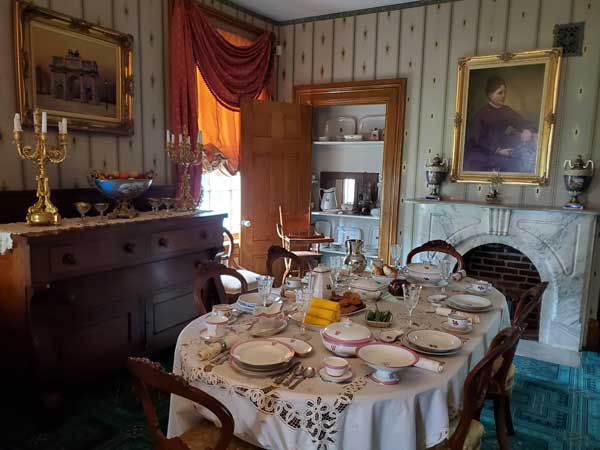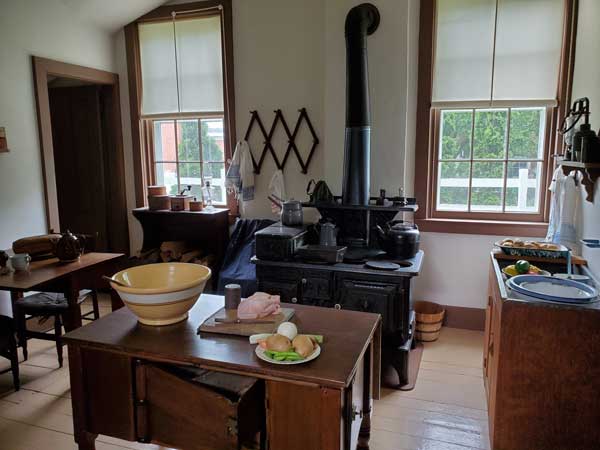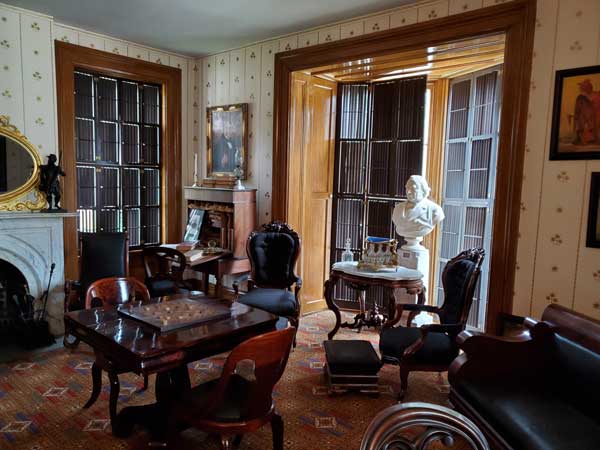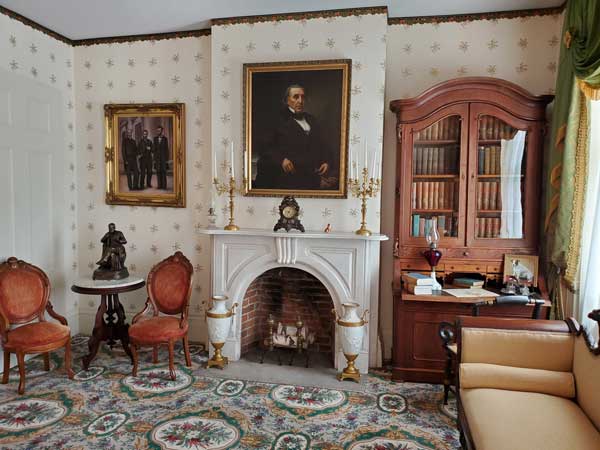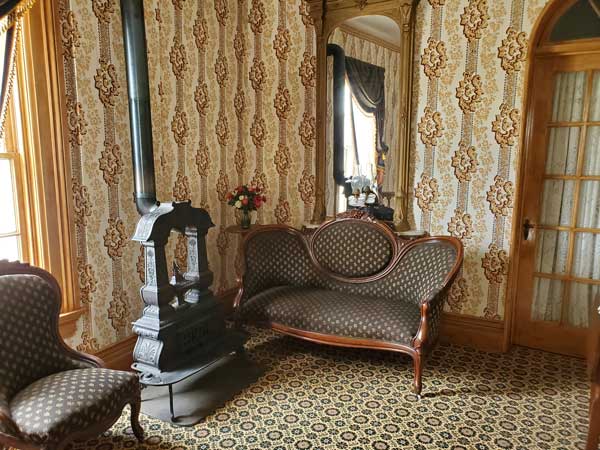Elihu B. Washburne House
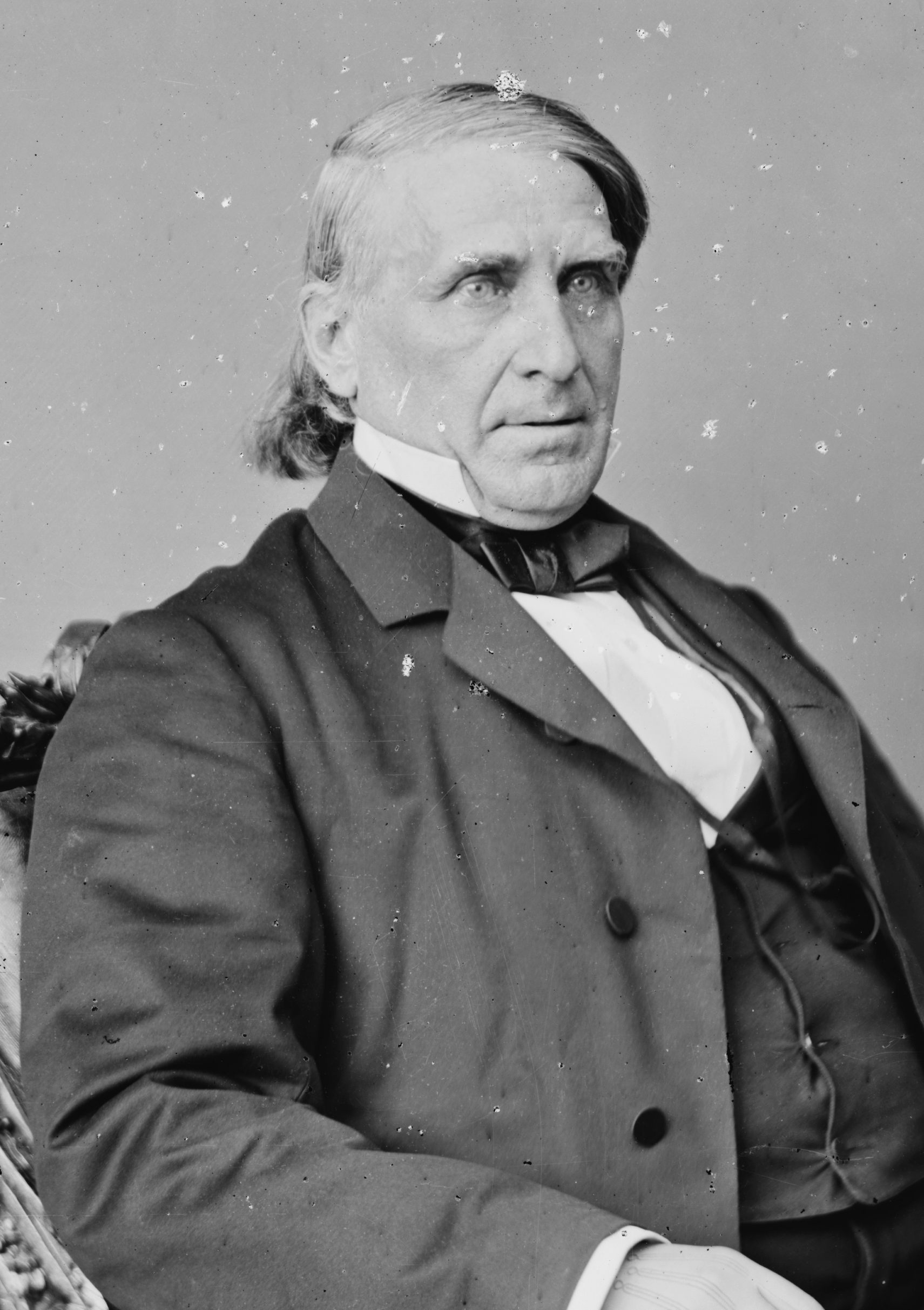
Galena was a thriving commercial center for a profitable lead-mining region when Elihu Washburne arrived in 1840. A recent graduate of Harvard Law School and a Whig, Washburne knew that there was work to be found in Galena, where most of the lawyers were Democrats. Galena residents were, wrote Washburne, a "litigious set" who rarely crossed party lines when employing an attorney.
Washburne opened a law office "in the good part of town," joined the Episcopal Church, became friends with the editor of the local Whig newspaper, and campaigned for Whig candidates. Soon he was employed by Galena's leading Whig lawyer, Charles S. Hempstead, with whom Washburne boarded for several years. There he met Hempstead's niece, Adele Gratiot, whom he married in 1845. The couple had seven children.
Politically active, Washburne served as a delegate to Whig conventions, but by the mid 1850s he was a member of the newly formed Republican party which he and his three brothers helped establish. An avid supporter of Abraham Lincoln's unsuccessful bid for the Senate in 1858, Washburne devoted his "whole soul and energies" to Lincoln's campaign for the presidency in 1860. He advised Lincoln before and after the election and kept him abreast of political developments in Illinois and Washington, D.C.
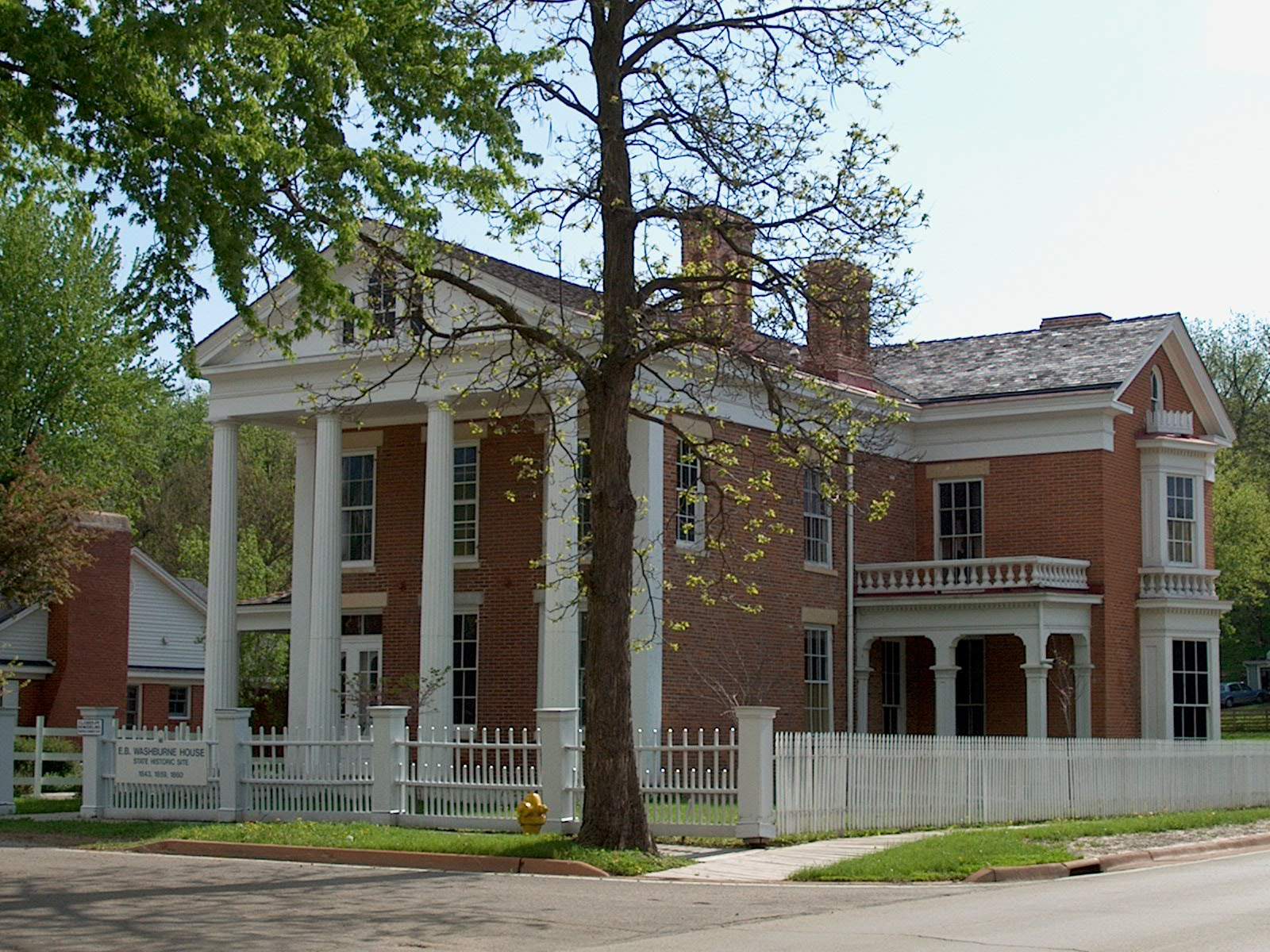
Washburne promoted the military and political career of another Galena resident, Ulysses S. Grant. Following Grant's election as president in 1868, Washburne served briefly as Secretary of State before the President appointed him ambassador to France. Recalled from France when Grant's second term of office ended in 1877, Washburne did not return to Galena, which was so "terribly dead and dull," but moved to Chicago. From 1884 until his death on October 22, 1887, he served as president of the Chicago Historical Society. He is buried next to his wife in Galena's Greenwood Cemetery.
Washburne's success and social position were reflected in his house, which was completed in 1845. The temple-like front portico with its large pillars were characteristic of the Greek Revival style, which was popular in Galena from the 1820s to the 1860s. Washburne closely supervised the house's construction, and when it was enlarged while he was away in the nation's capital, he followed the work in numerous letters.
The interior was organized into distinct formal, informal, and servant areas. The hallway separated the public and private rooms at the front of the house. Guests were received in the parlor, while the sitting room was reserved as a place for family members to read, study, and sew.
The servants' work area was confined to the rear of the home where such housekeeping functions as cooking and laundry were conducted.
The exterior is restored to its appearance as sketched in Harper's New Monthly Magazine in 1866. Inside, the home has been restored as a model of Victorian age middle-class gentility. Some wall coverings in the library and dining room have been restored.

